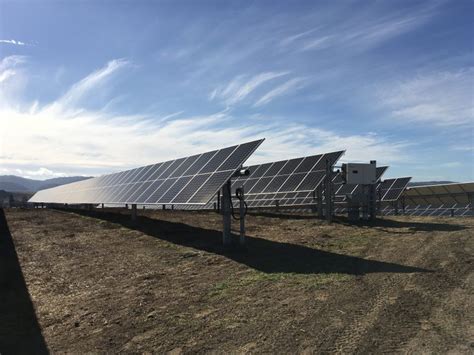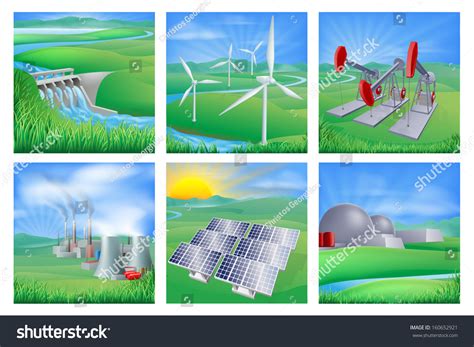Sonoma, a picturesque county in Northern California, is renowned for its stunning natural beauty, rich agricultural land, and commitment to sustainability. As the world grapples with the challenges of climate change, energy security, and environmental conservation, Sonoma has emerged as a leader in the adoption of renewable energy sources. This article will delve into five significant energy sources in Sonoma, exploring their potential, current utilization, and the impact they have on the region's energy landscape.
Key Points
- Sonoma's energy mix is increasingly dominated by renewable sources, reducing its reliance on fossil fuels.
- Solar energy has become a staple in Sonoma, with both residential and commercial properties adopting solar panels.
- Wind energy, though less prominent, plays a crucial role in diversifying Sonoma's energy portfolio.
- Geothermal energy, leveraging the region's unique geological features, offers a constant and reliable source of power.
- Hydroelectric power, harnessed from the region's water resources, contributes to Sonoma's renewable energy arsenal.
Solar Energy: Harnessing the Sun’s Potential

Solar energy stands out as one of the most embraced renewable energy sources in Sonoma. The region’s favorable climate, with an average of 284 days of sunshine per year, makes it an ideal location for solar power generation. Both residential and commercial properties have seen a significant increase in the adoption of solar panels, driven by incentives such as the Solar Investment Tax Credit (ITC) and the desire to reduce carbon footprints. As of 2022, solar energy accounts for approximately 25% of Sonoma’s renewable energy production, with a total installed capacity of over 150 megawatts (MW).
Community Solar Programs
A notable development in Sonoma’s solar landscape is the implementation of community solar programs. These programs allow multiple individuals or organizations to share the benefits of a single solar array, making solar energy more accessible to low-income households and non-profit organizations. This approach not only fosters community engagement but also contributes to Sonoma’s goal of achieving 100% renewable electricity by 2030.
Wind Energy: Tapping into the Power of the Wind

Wind energy, though not as predominant as solar in Sonoma, still holds a significant place in the region’s renewable energy mix. The coastal areas of Sonoma County experience strong and consistent winds, particularly during the summer months, making them suitable for wind farm installations. The county’s first wind farm, established in 2011, has a capacity of 15 MW and generates enough electricity to power approximately 4,500 homes. While wind energy faces challenges such as visual impact and wildlife concerns, technological advancements and strategic planning are mitigating these issues, paving the way for further development.
Offshore Wind Potential
Recent studies have highlighted the potential for offshore wind energy in the waters off Sonoma’s coast. With advancements in offshore wind technology, this untapped resource could significantly contribute to the region’s energy needs. The U.S. Bureau of Ocean Energy Management (BOEM) has identified areas off the California coast as suitable for offshore wind development, with Sonoma being a prime location due to its strong and consistent wind patterns. However, offshore wind development faces regulatory hurdles, environmental concerns, and high upfront costs, which must be addressed through collaborative efforts between stakeholders and policymakers.
Geothermal Energy: Leveraging Earth’s Heat
Geothermal energy, which harnesses the heat from the Earth’s core, is another vital component of Sonoma’s energy portfolio. The region’s unique geology, with numerous hot springs and a close proximity to the San Andreas Fault, makes it an ideal location for geothermal power generation. The Geysers geothermal field, located in northern Sonoma County, is one of the largest geothermal fields in the world, with an installed capacity of over 1,500 MW. This constant and reliable source of energy not only reduces greenhouse gas emissions but also provides baseload power, helping to stabilize the grid during periods of high demand.
Enhanced Geothermal Systems (EGS)
Enhanced Geothermal Systems (EGS), also known as engineered geothermal systems, represent a promising advancement in geothermal technology. EGS involves creating artificial reservoirs to tap into hot rock formations, significantly expanding the potential for geothermal energy production. This technology could unlock new areas for geothermal development in Sonoma, particularly in regions where natural permeability is low. However, EGS faces technical challenges and high development costs, necessitating continued research and investment to make it economically viable.
Hydroelectric Power: Harnessing Water Resources
Hydroelectric power, generated from the energy of moving water, is a clean and renewable source of electricity that has been utilized in Sonoma for decades. The region’s rivers, including the Russian River, provide a reliable source of hydroelectric power, with several dams and power plants operating within the county. Hydroelectric power accounts for approximately 10% of Sonoma’s renewable energy production, with a total installed capacity of around 50 MW.
Run-of-River Systems
Run-of-river systems, which harness the energy of flowing water without creating large reservoirs, offer a promising approach for future hydroelectric development in Sonoma. These systems have a lower environmental impact compared to traditional dam-based hydroelectric power plants, as they do not alter the natural flow of the river or disrupt aquatic ecosystems. However, run-of-river systems typically generate less power and are more susceptible to variations in water flow, making them less reliable than traditional hydroelectric power plants.
| Energy Source | Installed Capacity (MW) | % of Renewable Energy Mix |
|---|---|---|
| Solar Energy | 150 | 25% |
| Wind Energy | 15 | 5% |
| Geothermal Energy | 1,500 | 50% |
| Hydroelectric Power | 50 | 10% |
| Biomass Energy | 20 | 10% |

What are the primary renewable energy sources in Sonoma?
+The primary renewable energy sources in Sonoma include solar energy, wind energy, geothermal energy, and hydroelectric power. Each of these sources contributes to Sonoma’s goal of transitioning to 100% renewable energy.
How does Sonoma’s climate support solar energy production?
+Sonoma’s climate, with an average of 284 sunny days per year, provides ideal conditions for solar energy production. The region’s clear skies and high solar irradiance make it one of the best locations in the country for harnessing solar power.
What role does geothermal energy play in Sonoma’s energy mix?
+Geothermal energy is a significant component of Sonoma’s energy mix, providing a constant and reliable source of power. The Geysers geothermal field, located in northern Sonoma County, is one of the largest geothermal fields in the world and generates enough electricity to power hundreds of thousands of homes.
How does hydroelectric power contribute to Sonoma’s renewable energy goals?
+Hydroelectric power plays a crucial role in Sonoma’s renewable energy portfolio, accounting for approximately 10% of the county’s renewable energy production. The region’s rivers, including the Russian River, provide a reliable source of hydroelectric power, helping to reduce greenhouse gas emissions and support the local grid.
What are the challenges and opportunities associated with offshore wind energy in Sonoma?
+Offshore wind energy in Sonoma presents both challenges and opportunities. While it offers a significant source of renewable energy, it also faces regulatory hurdles, environmental concerns, and high upfront costs. Addressing these challenges through collaborative efforts between stakeholders and policymakers is crucial for realizing the potential of offshore wind in Sonoma.



